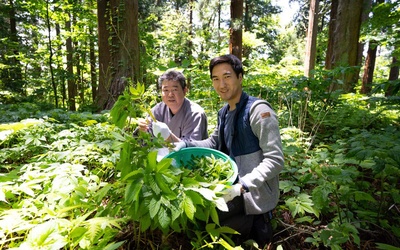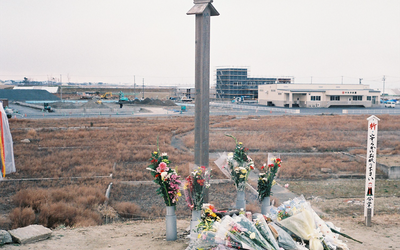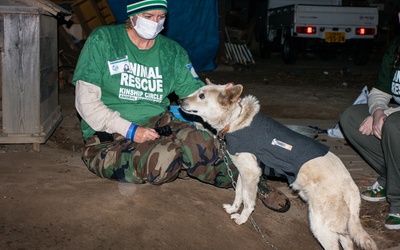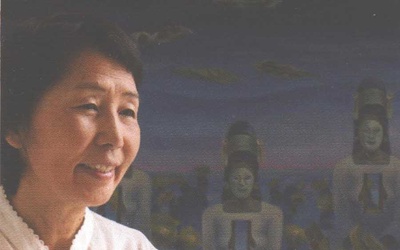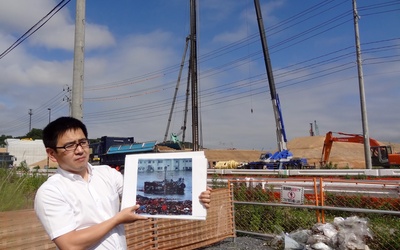Kizuna: Nikkei Stories from the 2011 Japan Earthquake & Tsunami

In Japanese, kizuna means strong emotional bonds.
This series shares stories about Nikkei individual and/or community reaction and perspectives on the Great Tohoku Kanto earthquake on March 11, 2011 and the resulting tsunami and other impacts—either about supporting relief efforts or how what has happened has affected them and their feeling of connection to Japan.
If you would like to share your reactions, please see the “Submit an Article” page for general submission guidelines. We welcome submissions in English, Japanese, Spanish, and/or Portuguese, and are seeking diverse stories from around the world.
We hope that these stories bring some comfort to those affected in Japan and around the world, and that this will become like a time capsule of responses and perspectives from our global Nima-kai community for the future.
* * *
There are many organizations and relief funds established around the world providing support for Japan. Follow us on Twitter @discovernikkei for info on Nikkei relief efforts, or check the Events section. If you’re posting a Japan relief fundraising event, please add the tag “JPquake2011” to make it appear on the list of earthquake relief events.
Stories from this series
In Remembrance of the Tohoku Earthquake & Tsunami: An Interview with The Hidden Japan’s Derek Yamashita—Part 2
March 11, 2023 • Japanese American National Museum
Read Part 1 >> GOING BEYOND DEREK’S TOHOKU WORK Your work at The Hidden Japan has expanded to include creating events in Japan and America that celebrate our cultures and help provide cross-cultural understanding. What drove you to that mission for your business? As a Japanese American growing up in the Japanese American (JA) community, I have been able to see that the Japanese culture we are able to see in LA is only a small window into Japan. Even …
In Remembrance of the Tohoku Earthquake & Tsunami: An Interview with The Hidden Japan’s Derek Yamashita — Part 1
March 10, 2023 • Japanese American National Museum
Since 2011, March 11 has become a day of remembrance for the hundreds of thousands of Japanese lives that were changed forever by the devastating Great Tohoku Kanto earthquake. Many lives were lost due to the earthquake and subsequent tsunami. It caused numerous problems that affected the people and region in the weeks that followed, and continued for months and years to come. From the failure of the nuclear power plant in Fukushima to saltwater contamination of the soil to …
Remembering: The Great Eastern Japan Earthquake and Tsunami 10 Years Later
March 11, 2021 • Norm Masaji Ibuki
This past Feb. 13th, there was a magnitude 7.1 earthquake in Fukushima. I froze. Cold sweat and a familiar sense of panic came raging back. Flashback: March 11, 2011. I clearly recall waking up for school and getting an odd, frantic phone call from CBC radio asking for a comment about the earthquake and tsunami in Japan. What the hell was going on? I wondered, annoyed by the early morning disruption. All morning at school, I was preoccupied by finding …
Tenth Anniversary of Japan’s Tsunami Disaster – A Visual Story of Animal Rescue
March 5, 2021 • Lexie Boezeman Cataldo
We are fast approaching the tenth anniversary of the horrific earthquake and tsunami disaster that was unleased upon Japan on March 11, 2011. The magnitude 9.0 earthquake that hit Japan created a tsunami that flattened a 200-mile stretch (518 km) of coastline, and traveled in some areas as far as six miles inland. The tsunami then caused a triple meltdown at the Fukushima Daiichi Nuclear Power Plant in Fukushima. The fury of mother nature that killed over 18,000 people must …
The Mexican Piñatas and Blankets Sent to Japan in Support of the Victims of the Great Earthquake of 2011
March 10, 2017 • Sergio Hernández Galindo
It was early in the morning of March 11, 2011, and Midori Suzuki was having trouble sleeping. That same day, the Japanese Mexican Association was to inaugurate an art exhibit called Flor de Maguey that she had organized with some of her fellow painters. After Midori was finally able to fall asleep, a friend called to tell her there had been a massive earthquake in Japan. Still not totally awake, she answered quickly: “Don’t worry! It’s probably just one of …
In Minamisanriku, Surveying the Aftermath of the 2011 Great East Japan Earthquake
Sept. 20, 2016 • Nancy Matsumoto
On my last day in Minamisanriku, a small group of us from World in Tohoku signed up for a tour of the town’s downtown coastal area, which was decimated by the earthquake and tsunami of March 11, 2011. Until then we had been immersed in brainstorming ways to grow the organizations of a group of dedicated and inspiring social entrepreneurs. They were so positive, and so alive that it was hard to viscerally grasp the scope of the natural disaster …

